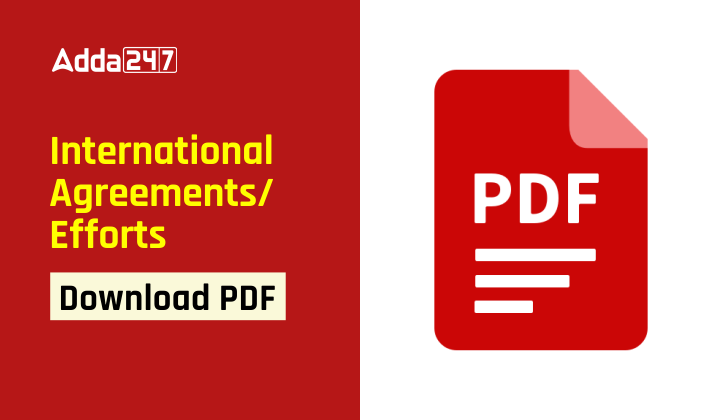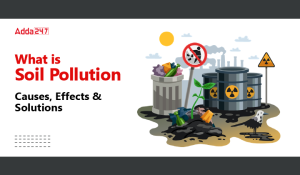Table of Contents
The topic of “International Agreements and Efforts” is a significant area for the UGC NET exam. This subject delves into various treaties, agreements, and initiatives undertaken by nations to tackle global challenges and foster international cooperation. Below are some notable international agreements and efforts.
UGC NET Study Notes for Paper 1
International Agreements /Efforts
International agreements and efforts refer to collaborative initiatives and treaties established between countries to address global issues and achieve common goals. These agreements and efforts often involve multiple nations coming together to address challenges such as climate change, human rights, trade, security, and more. They aim to foster cooperation, coordination, and collective action on a global scale. International agreements can take various forms, including treaties, conventions, protocols, and declarations, and they typically involve negotiations and consensus-building among participating countries.
Montreal protocol
- The Montreal Protocol is an international environmental treaty that was signed on September 16, 1987, in Montreal, Canada.
- The protocol was created in response to scientific evidence that showed that ODS was damaging the ozone layer in the Earth’s atmosphere, leading to increased levels of ultraviolet (UV) radiation reaching the Earth’s surface.
| What Montreal Protocol is related to? | Montreal Protocol is related to the regulation of ozone-depleting substances, |
| Important dates |
|
| Number of countries | 197 countries signed this protocol and hence become a universally ratified agreement |
- Under the Montreal Protocol, participating countries agreed to phase out the production and consumption of ODS, starting with CFCs and halons by 2000 and other ODS later.
What is ozone layer and ozone layer depletion?
- Ozone layer : The ozone layer is a thin layer of ozone gas in the Earth’s stratosphere that plays a critical role in protecting life on Earth by absorbing harmful ultraviolet (UV) radiation from the sun.
- Ozone layer depletion : Ozone layer depletion refers to the decline of ozone in the stratosphere due to releasing ozone-depleting substances (ODS), such as chlorofluorocarbons (CFCs), halons, and other chemicals. ODS is released from human activities, such as refrigerants, aerosol sprays, and industrial processes.
Montreal Protocol Succession
- Montreal Protocol reduced ODS production and consumption, Which helped to protect the ozone layer.
- Phased-out chemicals, like CFCs, also reduced greenhouse gases, aiding climate change.
- Ozone layer recovery decreased UV radiation, preventing skin cancer and other health issues.
- Ozone layer recovery protected ecosystems, like marine and terrestrial ecosystems, from UV radiation damage.
- The Montreal Protocol has also led to the development of new, safer, and more efficient technologies that have created jobs and stimulated economic growth.
In conclusion, The Montreal Protocol is widely regarded as one of the most successful international environmental agreements. The ozone layer is beginning to recover, and the protocol is credited with avoiding significant increases in UV radiation and associated health and environmental problems.
Rio Summit
- The Rio Summit, also known as the United Nations Conference on Environment and Development (UNCED) or the earth summit, was a major international conference held in Rio de Janeiro, Brazil, from June 3 to 14, 1992.
- The conference was organized by the United Nations (UN) and attended by representatives of 172 countries, as well as by numerous non-governmental organizations (NGOs) and other stakeholders.
- The Rio Summit was a significant event in the history of international environmental diplomacy, as it brought together world leaders to discuss a wide range of environmental and sustainable development issues, including climate change, biodiversity, deforestation, and the impact of economic development on the environment.
Rio Summit Outcomes
The Earth Summit, also known as the Rio Summit 1992, produced several important documents including:
| 1. | The Rio Declaration on Environment and Development: This declaration consisted of 27 principles that were designed to guide countries towards sustainable development. |
| 2. | Agenda 21: Non-binding action plan for sustainable development adopted by 170 governments, covering poverty reduction, public health, and environmental protection. |
| 3. | Forest Principles: Non-legally binding statement emphasizing sustainable forest management and the role of local communities in forest conservation |
Rio Summit adopted UNFCCC (The United Nations Framework Convention on Climate Change) for the global effort to mitigate climate change and recognized developed countries’ responsibility to support developing countries. UNFCCC established a framework for future climate change negotiations and led to the adoption of the Kyoto Protocol.
Convention on Biological Diversity
It is a multilateral treaty established by the United Nations with the aim of promoting the conservation of biodiversity, the sustainable use of its components, and the fair and equitable sharing of benefits arising from the utilization of genetic resources. The CBD was adopted at the United Nations Conference on Environment and Development, also known as the Earth Summit, held in Rio de Janeiro in 1992, and entered into force in December 1993.
The CBD has three main objectives:
| 1. | Conservation of biological diversity: The CBD aims to conserve biodiversity through protected areas, regulate trade in endangered species, and restore degraded ecosystems. |
| 2. | Sustainable use of biological resources: CBD promotes sustainable use of biological resources for well-being and economic development, through sustainable agriculture, forestry, fisheries practices, and traditional knowledge. |
| 3. | Fair and equitable sharing of benefits: The CBD seeks to ensure that the benefits derived from the use of genetic resources are shared fairly and equitably between the countries that provide them and the users of those resources. |
Key Highlights of the CBD:
- The CBD has been ratified by 196 Countries.
- India is also a party to the Convention. India ratified it in 1994.
- The Biological Diversity Act, of 2002 was enacted for giving effect to the provisions of the Convention.
- To implement the provisions of the Act, the government established the National Biodiversity Authority (NBA) in 2003. The NBA is a statutory body.
- The convention is legally binding on its signatories.
- The Conference of Parties (COP) is the governing body of the convention. It consists of the governments that have ratified the treaty.
- Its Secretariat is in Montreal, Canada.
- Only two member states of the United Nations are not Parties to the CBD, namely: the USA and the Vatican.
- In the 1992 Earth Summit, two landmark binding agreements were signed, one of them being the UNCBD. The other one was the Convention on Climate Change.
- More than 150 countries signed the document at the Summit, and since then, over 175 nations have ratified the agreement.
Hence, different international agreemnets have been signed by countries to promote environmental protection and safeguarding interest of environment and its related aspects.
Download International agreements efforts Study Notes PDF
| UGC NET Related Articles | |
| UGC NET Notification 2025 | UGC NET Application Form 2025 |
| UGC NET Previous Year Question Paper | |




 What is Soil Pollution - Causes, Effects...
What is Soil Pollution - Causes, Effects...
 UGC NET Philosophy Syllabus 2025 PDF Dow...
UGC NET Philosophy Syllabus 2025 PDF Dow...
 UGC NET Commerce Syllabus 2025 PDF Downl...
UGC NET Commerce Syllabus 2025 PDF Downl...












